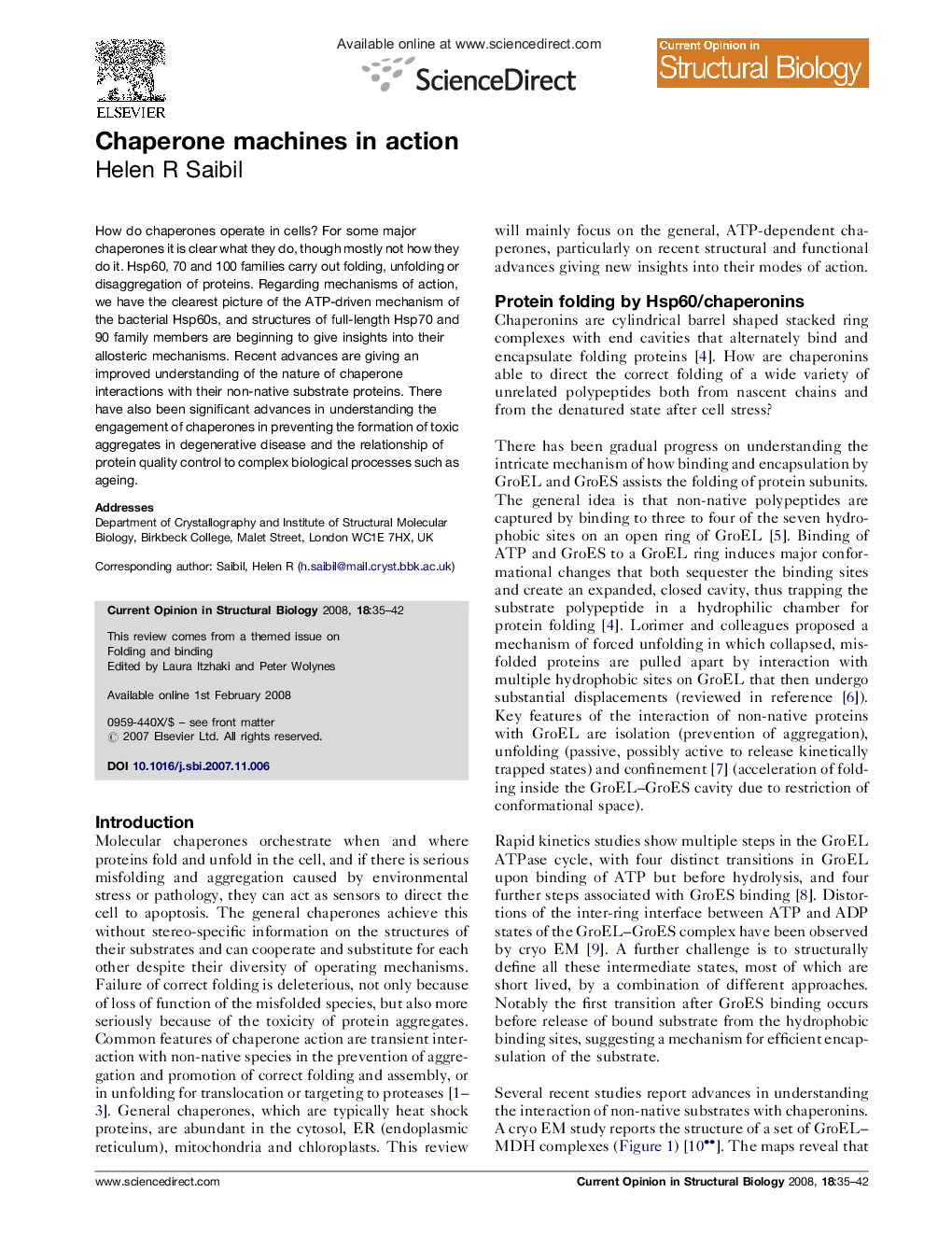| Article ID | Journal | Published Year | Pages | File Type |
|---|---|---|---|---|
| 1979550 | Current Opinion in Structural Biology | 2008 | 8 Pages |
Abstract
How do chaperones operate in cells? For some major chaperones it is clear what they do, though mostly not how they do it. Hsp60, 70 and 100 families carry out folding, unfolding or disaggregation of proteins. Regarding mechanisms of action, we have the clearest picture of the ATP-driven mechanism of the bacterial Hsp60s, and structures of full-length Hsp70 and 90 family members are beginning to give insights into their allosteric mechanisms. Recent advances are giving an improved understanding of the nature of chaperone interactions with their non-native substrate proteins. There have also been significant advances in understanding the engagement of chaperones in preventing the formation of toxic aggregates in degenerative disease and the relationship of protein quality control to complex biological processes such as ageing.
Related Topics
Life Sciences
Biochemistry, Genetics and Molecular Biology
Biochemistry
Authors
Helen R Saibil,
